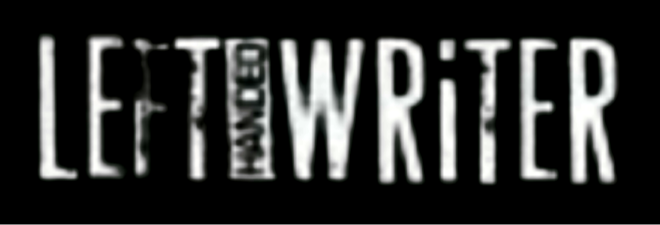NUMBERS, 2.0
Once you have a solid grasp of memorizing numbers, you have conquered one of the areas that gives most people the most trouble. You can now visualize dates, part or serial numbers, measurements and more. Beyond that, you can now create list with as many hooks as you want.
The Major System
This technique is known as the Major System, or the Phonetic Alphabet system. It also gives rise to “The Major List,” a numbered list with 100 hooks.
0. Sow 20. Nose 40. Rose 60. Cheese 80. Fez
1. Hat 21. Net 41. Road 61. Sheet 81. Fat
2. Hen 22. Nun 42. Rain 62. Chain 82. Fan
3. Ham 23. Nemo 43. Room 63. Jam 83. Foam
4. Row 24. Nero 44. Aurora 64. Cherry 84. Fire
5. Hill 25. Nail 45. Rail 65. Jello 85. File
6. Shoe 26. Notch 46. Rash 66. Judge 86. Fish
7. Cow 27. Neck 47. Rock 67. Chalk 87. Fog
8. Ivy 28. Knife 48. Roof 68. Chef 88. Fife
9. Bee 29. Knob 49. Rope 69. Ship 89. Fib
10. Toes 30. Mouse 50. Lace 70. Gas 90. Bus
11. Dad 31. Mat 51. Loot 71. Cat 91. Bat
12. Dune 32. Moon 52. Lion 72. Can 92. Pen
13. Dime 33. Mummy 53. Lime 73. Comb 93. Opium
14. Tire 34. Mower 54. Lure 74. Car 94. Bear
15. Doll 35. Mule 55. Lily 75. Coal 95. Bell
16. Tissue 36. Match 56. Leech 76. Cage 96. Bush
17. Duck 37. Mug 57. Log 77. Coke 97. Book
18. Dove 38. Movie 58. Lava 78. Cave 98. Beef
19. Tape 39. Map 59. Lip 79. Cape 99. Pipe
As always, your hooks should be simple, clear, unique images. If you have a number-rhyme peg list that uses SHOE for the number 2, it should be a completely different shoe than the one used for the number 6 in the Major List above.
And as with the other numbered lists we’ve used thus far, you can use a modifier list like the color modifier list, giving you 1000 hooks. And, as with the other lists, if you use chains as you encounter the information, you have the capacity to instantly commit 5,000-10,000 items or fact to memory.
Alternatively, you could simply choose to keep going and create 1000 individual hooks. 100 could be DISEASE. 101, DUST. 102, DOZEN. And so on.
Pitfalls and Possibilities
The method of using your house as a hook list is known as the Loci Method (loci is Greek for place), and is one of the first recorded instances of mnemonic techniques, explained by an ancient Greek poet named Simonides around 600 b.c.
It is possible to combine the Loci and Major methods, with each room in the house or building holding its own modified major list, giving you a capacity of 100,000 plus pieces of information.
This can be tricky. If you are doing this, the association must not only be clearly visualized, it must be clearly visualized IN THAT PARTICULAR ROOM. Otherwise your association to your red SHOE in the living room will get muddled with the red SHOE in the kitchen (or even one of the other SHOEs in the living room), and the links will work against each other.
I’d use EITHER a modified Major List, OR the Loci Method and Major List as an easier way of keeping things straight. If you need more than 1000 hooks to hold 5,000-10,000 bits of info, you’d be better off creating a new modifier list or choosing a new location.
Remember, memorizing something is not the same as learning it. It is just one of the three stages. It is important. And the ability to instantly memorize something and hold it in your mind to think about it in depth will help you understand it better, faster.
The utilization stage, with the 4 critical thinking skills, is what cements the info into long-term storage after using your 100 or 1000 or 10,000 hooks. Review them on the way home, or while eating, or in the shower—previously “lost” time. Begin incorporating the 4 key questions into those reviews. Fill in the gaps where needed and dig deeper into the four skills as you review over time. Doing this (a) strengthens your associations, (b) conditions your brain to retrieve the information as it is needed, and not simply when you recall the hook and (c) builds stronger connections between both related and non-related information already accessible to you. There is also evidence that, instead of building heavier neural tracts (reflex pathways) like rote does, mnemonic memory builds more synaptic connections between brain cells, which correlates to intelligence and creativity in studies.
In other words, the more connections you consciously create, the easier it becomes for the brain to create more new connections. The more information you learn and can readily access, the more information you have at your disposal to make new associations, and the more options you have at your disposal when exercising the 4 critical thinking skills.
In theory you could memorize the information, review it on the previously outlined schedule, and then keep periodically reviewing it in order to simply keep the information accessible indefinitely. But in the end, you are just making more work for yourself and you aren’t getting any closer to truly understanding the material.
